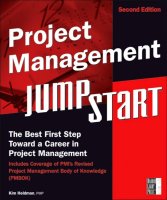
Why did I choose this resource?
I chose this resource with Kevin’s help to gain more knowledge and understanding of the project management process.
What did you learn from it?
I learned the phases of a project, from deciding to take on a project to closing and sign-offs; and why each step is important. I also learned why communication is one of the most important skills of a project manager and the guidelines to having great communication.
Key Knowledge
- 5 Phases of a Project
- Initiating –
- Establish criteria for selecting a project
- Identify project goals, project manager, project charter, and sign-off.
- Planning
- Define deliverables and draft statement of work
- Set a budget, schedule activities, and identify resources
- Executing
- Create and instruct project team
- Secure resources, review status, establish communication, manage progress
- Monitoring and Controlling
- Evaluate performance
- Keep the project on track and on time
- Consider requests for project changes
- Closing
- Authorize deliverables
- Record lessons learned
- Archive, close books, and release resources
- Initiating –
- Top 3 Constraints
- Time – never enough
- Resources – availability
- Quality – Relaxed vs. strict
- A project is not a success until the client is satisfied
- Most important skill for a project manager to have is outstanding communication
- 10 Guidelines for Great Communication
- Minimize “noise” – Give out only necessary information
- Use e-mail efficiently – short and to the point
- Paraphrase – Repeat information back so you know you heard it correctly
- Ask questions – Show you are listening
- Keep voice-mail messages short and clear – repeat phone numbers
- Pay Attention – eradicate disturbances
- Listen actively – Use body language to show you are listening
- Avoid jargon – Use plain language. “Start by telling you audience what you’re going to tell them, then tell them, and then tell them what you told them.”
- Use more than one medium – Voice, writing, pictures, and recordings
- Be patient
- When choosing to accept a project, criteria to be considered are cost, risk, and business strategy.
- Once a project is chosen, a Project Charter is created:
- “Statement of work (SOW)” – Defines direction of project
- “Project scope description” – Defines boundaries
- “Strategic plan” – Explains how project aligns with the organizations strategy
- “Project overview” – Reason for project and its goals
- “Project objectives” – Project achievements; should be “SMART” (specific, measurable, accurate, realistic, and time-bound)
- “Requirements” – Identify deliverables; should also be “SMART”
- “Business justification” – Recap of reason for the project
- “Resource and cost estimates” – preliminary at this point
- “Roles and responsibilities” – Assign specific task to workers
- “Sign-off” – Signatures of major project participants
- “Attachments” – Anything else required to make the project terms clear
- “Program Evaluation and Review Technique PERT” –
- Can be used to establish how long tasks will take
- Make 3 estimates:
- Optimistic
- Likely
- Pessimistic
- Use estimates and statistics to graph the duration of a project
- List all necessary resources, human and otherwise, to create an inventory. Use this information to see what else is required to complete the project.
- Know the purchasing policy for the organization; determines make-or-buy decisions
- Calculate probability of risks and decide what action to take; accept, avoid, transfer, or mitigate.
- Build in buffers of time and money; keep them sensible! May hurt credibility.
- Change Management Plan – 3 Commandments
- Document ALL requests for change
- Do not stray from the organization’s change management process; deny a request if it does not agree with the process.
- Be mindful that changes to budget, schedule, and quality usually affect each other.
- Signs a project may have to be abandoned
- Poor planning
- Excessive change requests
- Delays and budget cuts made without adjusting the project accordingly
- Closing a project
- Document everything in a project “journal” including mistakes and what was learned
- Finalize contracts and have all major parties sign-off that the project is completed
- Distribute a questionnaire to clients and staff for feedback
How are you using what you learned?
I am using what I learned to improve and expand the project management outline I have already created. I am also trying to use the guidelines for communication in every conversation I hold to improve my own communication skills.
Key Changes / Key Actions
- Add kaizen feedback from clients and employees/contractors to project folders.
- Review kaizen feedback periodically through the project to make improvements.
Source
- Name : Project Management JumpStart
- Author : Kim Heldman
- getAbstract.com: Link to Book


